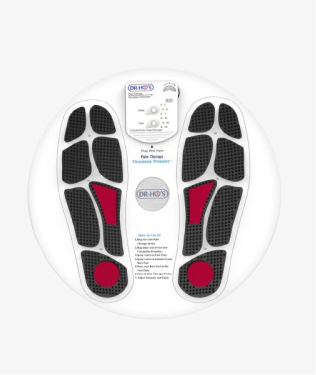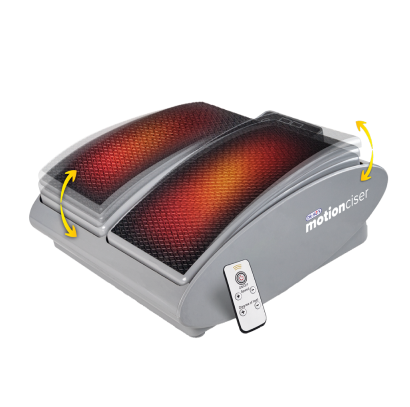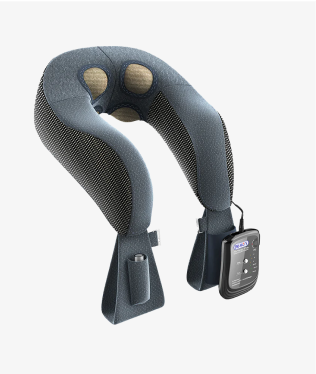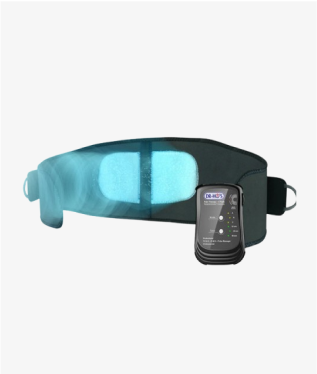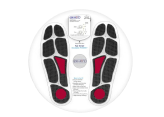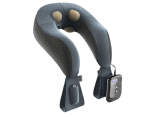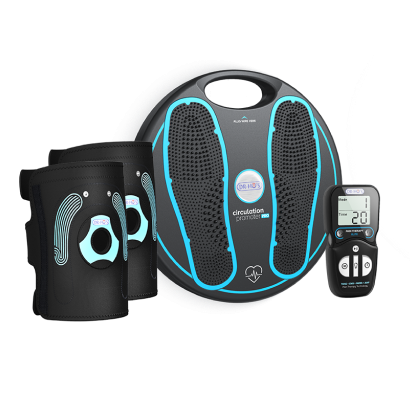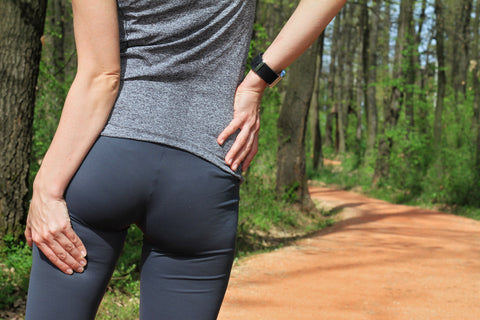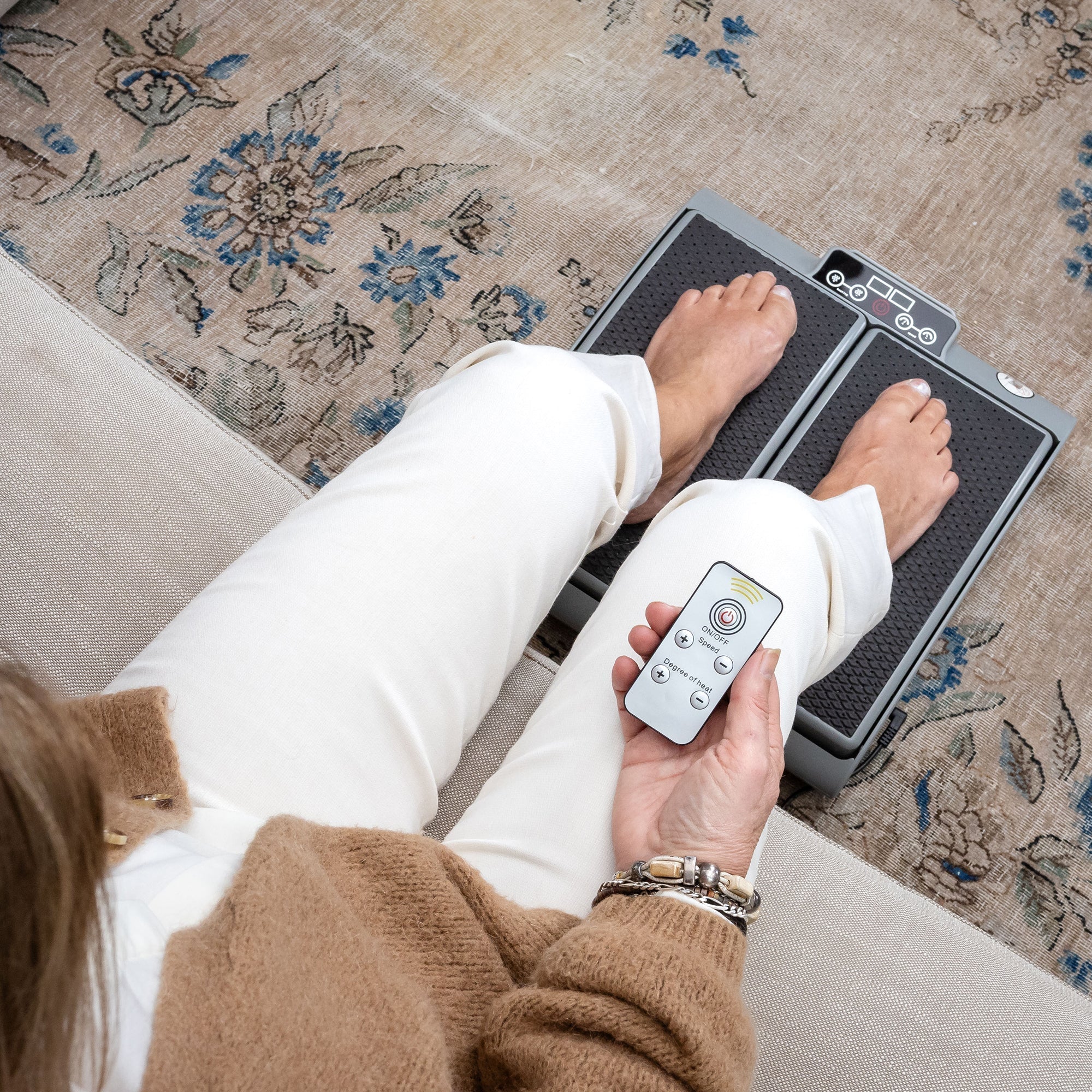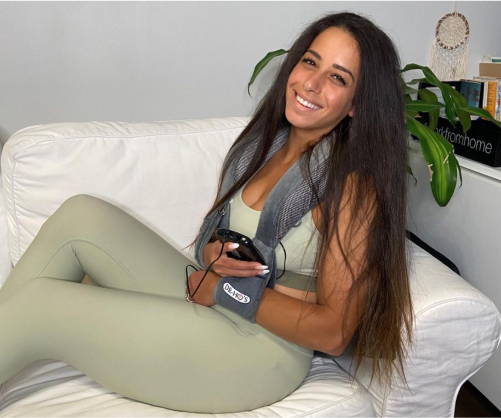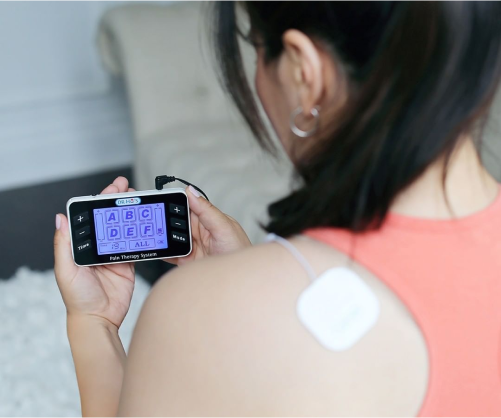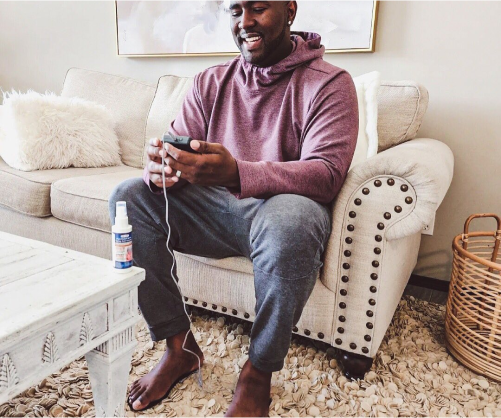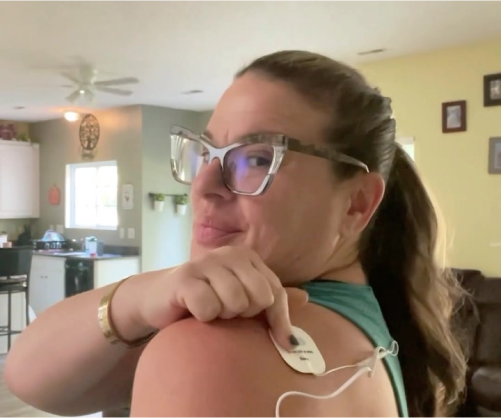The gluteal muscles—particularly the gluteus maximus, the largest muscle in the human body—play a crucial role in everyday movement, athletic performance, and postural stability. This powerful muscle connects the bony pelvis to the femur, creating the foundation for proper hip extension and rotation. When these muscles are weak or experiencing pain, it can trigger a cascade of issues affecting your lower back, hips, and even knees.
DR-HO'S TENS technology addresses these concerns by delivering precisely calibrated electrical impulses that temporarily increase local circulation while encouraging both nerve and muscle interaction in the glute region.
Unlike standard TENS units that rely solely on basic electrical stimulation, DR-HO'S devices combine TENS (Transcutaneous Electrical Nerve Stimulation), EMS (Electrical Muscle Stimulation), and NMES (Neuromuscular Electrical Stimulation) technologies into one comprehensive system. This advanced approach is particularly effective for the gluteal region, where large muscle groups often become inactive due to prolonged sitting or compensation patterns.
Understanding glute muscles and common issues
The gluteal muscle group consists of three distinct muscles: the gluteus maximus, gluteus medius, and gluteus minimus. As mentioned, the gluteus maximus is the largest muscle in the human body, extending from the pelvis to the femur (thigh bone). This powerful muscle serves as the primary extensor of the hip, enabling you to stand upright, climb stairs, and generate force during activities like jumping or running.

While smaller, the gluteus medius and minimus are equally important for stability. Located on the outer surface of the pelvis, these muscles help with hip abduction (moving the leg away from the body) and internal rotation. They also play a crucial role in stabilizing the pelvis during single-leg activities like walking or running.
Despite their importance, the gluteal muscles are vulnerable to several specific conditions that can significantly impact your quality of life:
-
Gluteal amnesia (inactive glutes): Prolonged sitting—especially common in our modern lifestyle—can lead to underactive or "sleeping" glute muscles. When these muscles aren't regularly engaged, you can see a loss of muscle tone or even muscle atrophy. Essentially, this means the glutes can "forget" how to activate properly, a condition often referred to as "dead butt syndrome."
-
Sciatica: This common condition involves compression or irritation of the sciatic nerve, which runs from your lower back through the gluteal region and down each leg. The compression often occurs in the gluteal area, causing pain that radiates from the buttocks down the back of the leg, sometimes extending to the foot. Many people experience sharp, shooting pain, numbness, tingling, or muscle weakness along this pathway.
-
Gluteal tendinopathy: This condition affects the tendons connecting the buttocks muscles to the hipbone and greater trochanter. It causes moderate to severe hip pain that can extend down the outside of the leg to the knee or lower leg. Gluteal tendinopathy is more common in women over 40 and younger people who engage in activities like running, skiing, and dancing.
-
Deep Gluteal Syndrome (DGS): DGS involves entrapment of the sciatic nerve in the deep gluteal space. Symptoms include deep, achy pain in the back of the hip down to the knee, tingling or numbness down the back of the leg, pain worsening with activities involving hip flexion, and a catching or locking sensation in the back of the hip.
-
Gluteus tears: Two main types of gluteus tears are gluteus medius tears (affecting the outer hip muscle) and gluteus minimus tears (affecting the muscle beneath the gluteus medius). These tears can occur in one or both gluteal tendons and significantly impact mobility.
-
Gluteal strain: A gluteal strain is a tear in one or more of the gluteal muscles. Symptoms include sudden, sharp pain in the buttocks, pain during activities using gluteal muscles, swelling, tenderness, possible bruising, and weakness in the affected area.
-
Myofascial pain syndrome: This condition affects the large gluteus maximus and gluteus medius muscles and is characterized by the formation of painful muscle knots (trigger points), sharp pain when trigger points are pressed, and pain spreading throughout the buttock area.
These issues create a domino effect throughout the kinetic chain, potentially affecting your posture, gait, and overall movement quality. They can manifest as pain not just in the specific muscles of the glutes but also in the lower back, hips, knees, and even ankles.
The science behind DR-HO'S TENS technology for glutes
DR-HO'S innovative 4-in-1 AMP Technology offers a science-based approach to these challenges. Our proprietary technology goes beyond basic stimulation by combining TENS, EMS, and NMES into one comprehensive system that works with your body's natural processes. This advanced approach delivers precisely calibrated electrical impulses that interact with both nerve and muscle tissues in the gluteal region, helping to temporarily soothe discomfort while encouraging proper muscle function.
By improving local circulation and facilitating enhanced nerve-to-muscle communication, DR-HO'S TENS units provide a non-invasive option for addressing glute-related issues without solely relying on medications. Our technology is specifically designed to help temporarily "wake up" inactive glutes while simultaneously providing relief from discomfort.
When you apply a DR-HO'S device to your glutes, you're accessing multiple therapeutic modalities at once:
-
Transcutaneous Electrical Nerve Stimulation (TENS): This component works by sending gentle electrical pulses that interact with nerve pathways. These signals essentially create a "traffic jam" that helps interrupt pain signals traveling to your brain, providing temporary relief from discomfort in the gluteal region.
-
Electrical Muscle Stimulation (EMS): This element delivers specific electrical frequencies that cause your gluteal muscles to contract and relax rhythmically. For inactive or weakened glutes, these controlled contractions can help reawaken neural pathways between your brain and muscles, improving muscular response over time.
-
Neuromuscular Electrical Stimulation (NMES): Our advanced NMES technology targets the junction where nerves communicate with muscles. This is particularly beneficial for the complex gluteal region, where proper muscle firing patterns are essential for coordinated movement and stability.
-
Auto-Modulating Pulse: This system continuously varies the electrical impulses, ensuring your body doesn't become accustomed to a single pattern. This helps ensure sustained effectiveness throughout your treatment and prevents the diminishing returns often experienced with conventional devices.
How AMP technology benefits gluteal muscles, specifically
The gluteal region presents unique challenges for electrical stimulation therapy due to its large muscle mass, varied tissue density, and complex neural pathways. DR-HO'S technology addresses these challenges through:
-
Deep tissue penetration: Our calibrated waveforms are designed to reach the deeper gluteal muscles effectively, not just surface tissues. This is crucial given that the gluteus maximus is the largest muscle in the body and requires appropriate stimulation depth.
-
Varied frequency delivery: Different gluteal conditions respond best to specific electrical frequencies. Low frequencies (2-10 Hz) are excellent for stimulating endorphin release and reducing inflammation, while higher frequencies (50-100 Hz) can help with immediate pain relief and muscle activation. DR-HO'S technology delivers optimized frequency combinations tailored for gluteal tissues.
-
Proper neural recruitment: The gluteal muscles require sequential recruitment of motor units for proper function. Our technology mimics natural neural firing patterns to encourage proper muscle fiber engagement.
-
Increased circulation: The rhythmic contractions created by our devices encourage temporarily increased blood flow to the gluteal region, which can help reduce muscle tension and promote the delivery of oxygen and nutrients to tissues that may be compromised.
Optimal pad placement for glute activation
Proper pad placement is crucial when using your DR-HO'S TENS unit for glutes. The unique anatomy of the gluteal region requires specific electrode positioning to achieve maximum effectiveness. Our proprietary 4-in-1 AMP Technology works optimally when the electrical impulses can properly interact with both the nerve pathways and muscle tissues in the targeted area.
General guidelines for glute pad placement
Before placing your DR-HO'S electrode pads, ensure that:
-
Your skin is clean, dry, and free from oils or lotions
-
The pads are firmly adhered to maintain consistent contact
-
You've selected the appropriate pad size for the treatment area
DR-HO'S pads are designed with optimal conductivity to deliver our proprietary electrical stimulation directly where needed. The advanced formulation of our gel pads ensures comfortable adherence while facilitating the transfer of our calibrated electrical impulses.
Placement for general glute activation, muscle performance, and strengthening
For overall glute activation using DR-HO'S technology:
-
Place two large pads symmetrically on each buttock, centered on the gluteus maximus
-
Position the pads approximately 2-3 inches apart
-
Ensure the pads are placed on the fleshiest part of the muscle, avoiding bony prominences

This configuration allows DR-HO'S AMP Technology to effectively stimulate the largest muscle fibers in your body (and prevent muscle atrophy), causing gentle-to-stronger muscle contractions that temporarily increase circulation while encouraging proper muscle engagement patterns.
Pad placement for sciatica and deep gluteal syndrome
When addressing sciatic pain that radiates through the glutes:
-
Place two large pads vertically and parallel to each other on either side of the spine in the lower back region, leaving at least a one-inch gap between pads (never place directly on the spine)
-
Position two additional pads on each buttock where you feel the most discomfort, often along the path of the sciatic nerve

This comprehensive arrangement allows DR-HO'S proprietary technology to interact with both the nerve pathways and surrounding muscles that may be contributing to sciatic compression.
Disclaimer: DR-HO'S content is intended for informational purposes only and should not be taken as medical advice. Please consult a certified medical professional for diagnosis and treatment recommendations.
Pad placement for gluteal tendinopathy
For targeting the tendon connections around the hip joint:
-
Place one pad on the outer portion of the affected buttock, near the greater trochanter (the bony prominence at the top of the femur)
-
Position a second pad slightly lower and more central on the gluteus maximus

DR-HO'S calibrated stimulation can help temporarily increase circulation to the tendon attachments while providing comforting relief to tender areas.
Placement for lower back pain with a glute connection
To address the important connection between lower back pain and gluteal function:
-
Place two pads vertically on either side of the spine in the lower back (maintain at least one inch of separation from the spine)
-
Position two additional pads on each buttock

This placement strategy recognizes the interconnected nature of the lower back and gluteal region, allowing DR-HO'S proprietary AMP Technology to work with your body's natural processes across the entire posterior chain.
Adjusting intensity and program settings
Once you've positioned your pads according to the guidelines above, start with a lower intensity setting and gradually increase until you feel a comfortable sensation. DR-HO'S innovative Auto-Modulating Pulse Technology will automatically adjust the stimulation patterns, but finding your ideal starting intensity is important.
Remember that DR-HO'S unique technology works through precisely calibrated electrical impulses that temporarily interact with your body's natural nerve and muscle functions. The proper pad placement ensures these impulses reach their intended targets effectively, maximizing the therapeutic potential.
Using DR-HO'S TENS for glute training and recovery
Achieving optimal gluteal health requires a comprehensive approach. DR-HO'S TENS unit for glutes works most effectively when integrated into a holistic program that addresses all aspects of muscle function, recovery, and pain management. Our proprietary 4-in-1 AMP Technology is a valuable complement to movement practices and professional care.
Integrating with movement practices
Movement is essential for maintaining healthy gluteal function. When combined with DR-HO'S advanced simulation technology, practices like yoga, pilates, and other forms of stretching can yield enhanced results.
Key stretches that support glute muscles include bridge poses, warrior variations, and single-leg balance exercises that engage the glutes, the pigeon pose, figure-4 stretch, and gentle hamstring stretches. Using your DR-HO'S device for 15-20 minutes before your exercise program can increase blood circulation and neural activation in the gluteal region, potentially contributing to more effective movement quality.
Recovery protocol using DR-HO'S technology
Recovery is where DR-HO'S TENS unit for glutes truly shines as part of a comprehensive approach.
-
Apply DR-HO'S pads to the gluteal region within 30-60 minutes after physical activity
-
Regular use of DR-HO'S technology (3-4 times weekly) can help maintain gluteal activation
-
Alternate between different program settings to address both superficial and deep tissues
-
Combine with gentle movement on non-training days to support ongoing gluteal health
Complementing professional care
DR-HO'S advanced technology works synergistically with various professional treatments that can help with pain treatment. Indeed, many physical therapists recommend home-based electrical stimulation between sessions, and DR-HO'S proprietary technology provides professional-grade stimulation that continues the therapeutic process.
Customizing your approach
Every individual's gluteal needs are unique. DR-HO'S 4-in-1 AMP Technology offers versatility through multiple program settings and adjustable intensity levels. Some key considerations for personalizing your approach:
-
Frequency of use: Most users benefit from 3-5 sessions weekly, but this can be adjusted based on your specific needs
-
Duration: Start with 15-20 minute sessions and adjust based on your response
-
Intensity level: Begin at lower settings and increase gradually to find your comfort zone
-
Program selection: Explore different settings to identify which provides optimal results for your specific condition
By integrating DR-HO'S innovative technology with thoughtful movement practices and professional care, you create a comprehensive approach to gluteal health that addresses multiple aspects of function, comfort, and performance. Our proprietary 4-in-1 AMP Technology works with your body's natural processes to temporarily increase circulation, encourage proper nerve and muscle interaction, and provide a valuable component of your overall gluteal wellness strategy.
Conclusion: Relieving and activating your glutes with DR-HO’S technology
Living with gluteal discomfort or muscular imbalance doesn't have to limit mobility or compromise quality of life. By incorporating DR-HO'S advanced TENS unit for glutes into your comprehensive care routine, you're taking an important step toward effective management of both discomfort and function in this crucial muscle group.
You may notice several positive changes as you continue using our sophisticated 4-in-1 AMP Technology on your gluteal region. Many users report experiencing decreased intensity of discomfort during daily activities, along with improved muscle activation and mobility in their glute muscles. The combination of AMP, TENS, EMS, and NMES working together often leads to reduced muscle tension and more consistent relief following each session.
To maximize the benefits of your DR-HO'S device for gluteal health:
-
Follow our recommended pad placement guidelines for specific gluteal conditions
-
Maintain a consistent treatment schedule to support long-term improvements
-
Integrate your DR-HO'S sessions with appropriate movement practices
-
Stay attentive to your body's response to different settings
-
Keep your device and electrodes well-maintained for optimal conductivity
Our proprietary AMP Technology is designed to work harmoniously with your body's own pain management and muscle activation systems. By delivering precisely modulated electrical stimulation, the device helps support temporary relief while encouraging optimal nerve and muscle interaction in the gluteal region.
Remember that while our advanced stimulation technology can provide significant temporary relief and muscle activation benefits, it works best as part of a comprehensive approach to gluteal care. Combined with proper movement, appropriate strengthening exercises, and good body mechanics, your DR-HO'S device can be an invaluable tool in your journey toward improved comfort and function in this important muscle group.Looking to learn more about managing your gluteal health? Visit our website for additional resources, or reach out to our customer care team. We're here to help you live life on your terms, with less focus on discomfort and more focus on what matters to you.
Disclaimer: DR-HO'S content is intended for informational purposes only and should not be taken as medical advice. Please consult a certified medical professional for diagnosis and treatment recommendations, and before starting any new exercise routines.


